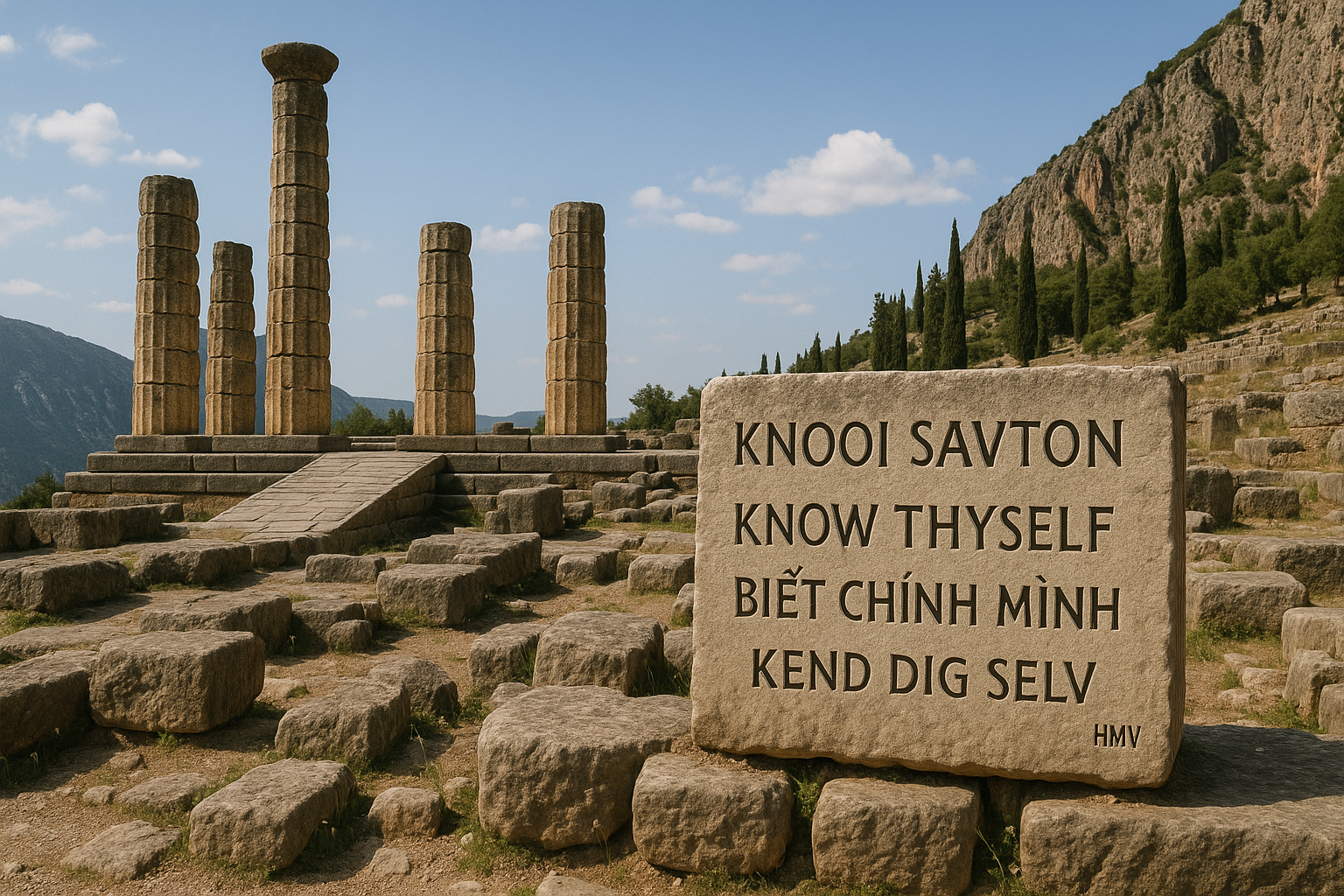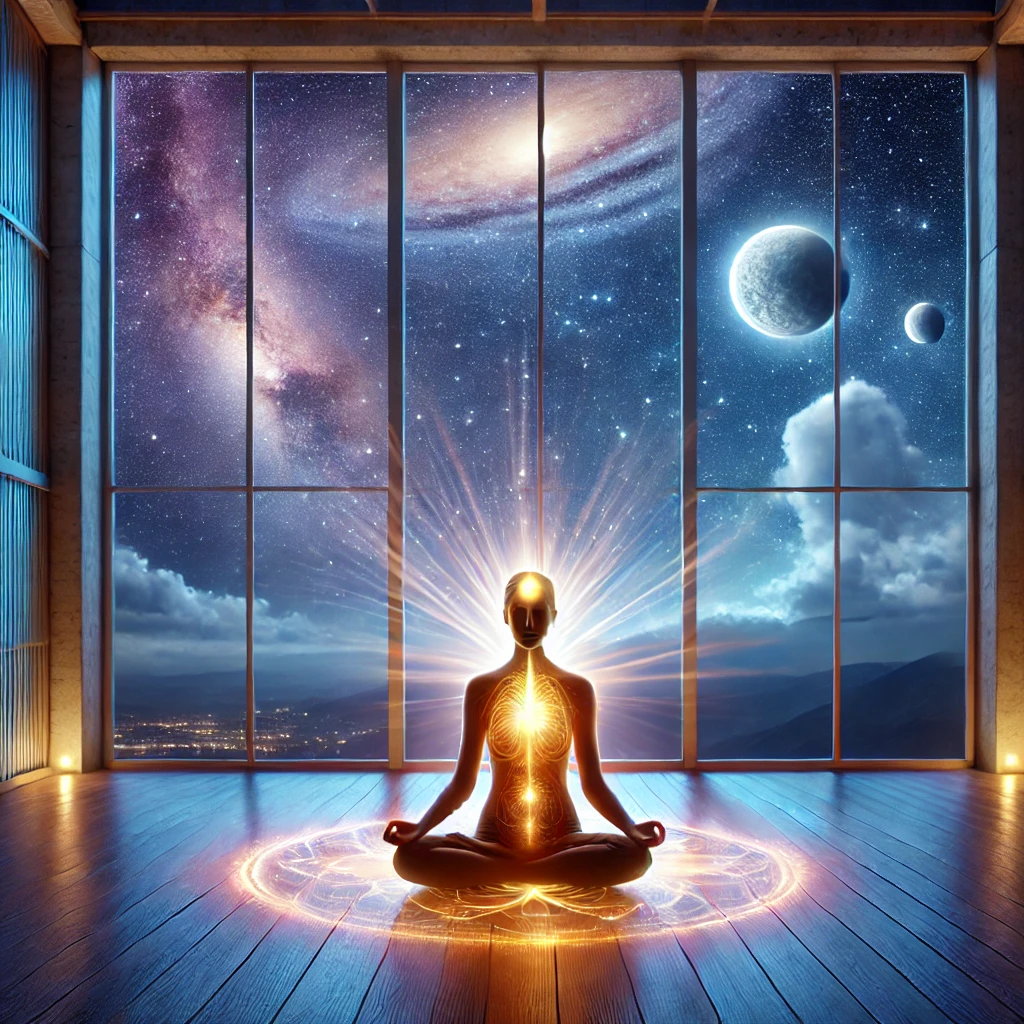Rediscover yourself
Be calm, still and aware
Who are we, experientially speaking?
The question “Who am I?” has long been at the center of our self-inquiry. When someone asks, “Who are you?” — what exactly is the experience of the “I” that responds?
As we reflect on our lives, from early childhood through youth and into older age, we may notice something subtle but profound: the experience of being “me” has never changed. Our bodies have grown, our thoughts have evolved, and our roles have shifted. Yet, the feeling that “we are here,” that “we are aware,” has remained constant. There is a sameness, a steady presence that silently accompanies every moment of life.
But when we try to describe ourselves, we often turn to things that change — our bodies, our gender, our names, our personalities, our preferences. We identify with these shifting aspects and believe them to be who we are. In doing so, we overlook the one who is observing all these changes. We forget the part of us that never changes — the silent witness within.
This unchanging presence, the one that knows and observes, is what we call awareness. Awareness does not judge. It has no opinion. It is still, open, and calm. Because of these qualities, it can see all the changes in our outer experience — our feelings, emotions, identities, likes and dislikes, and the roles we play. Most of us believe these changeable aspects to be our true selves, but they are only the facade we wear to move through the world.
We act out different roles depending on our environment. At home, we might be a parent. At work, a colleague. In social situations, perhaps a leader or a helper. These roles are practical and useful, helping us navigate life. But they are not the core of who we are.
By recognizing this, we begin to understand that we are made of two aspects. One is the outer self — the facade that adapts and engages with the world, making daily life more manageable. The other is the inner core — the silent awareness that watches it all. And in this realization, we come to know the depth of our inner Being.
Two Aspects of Our Being
In each of us, there are two aspects that define our being. One is changeable, ever-shifting, and temporary—our thoughts, feelings, emotions, our body, and the sensations we experience. These are the things we often identify with, the aspects that create our persona and shape our daily lives. The other aspect, however, remains constant, untouched by time—the awareness within us. This awareness is the witness to all that changes, the stillness behind the whirlwind of thoughts and sensations.
The Mistake of Identification
For much of our lives, we forget this unchanging awareness and focus solely on the fluctuating aspects of ourselves. We chase after our thoughts, feelings, and desires, attempting to grasp hold of something that, by nature, is elusive. This chase leads to disappointment and suffering, as nothing in the world of change can ever be fully held or controlled. Our attempts to find lasting peace in this changeable world only deepen our sense of frustration.
Recognizing the True Self
Yet, deep down, there is a part of us that knows we are more than our thoughts and emotions. We know we are alive, conscious, and aware. But when we try to describe this part, we find it difficult. It’s intangible, not something we can touch or see. This awareness is not of the body or the mind—it is that which knows, that which witnesses all experiences without being moved by them. And it has always been there, the same in childhood, youth, and adulthood.
The Path to True Peace
The mistake we make is identifying ourselves with the ever-changing mind and body. This misidentification leads us into confusion, affecting how we interact with the world, solve problems, and relate to others. But the key to overcoming this confusion lies in recognizing our true nature as awareness, the unchanging presence within us.
When we come to realize that we are awareness, we find ourselves returning to a space of calmness and stillness, a place of inner peace that remains steady regardless of what happens around us. This awareness is our true self, and it has always been here, waiting to be recognized.
Living in the Present Moment
Once we identify ourselves as awareness, we can begin to live in the present moment—not in the concept of time, but in the experience of now. While time is something that belongs to the past and future, the present moment only exists within the experience of awareness. Time cannot touch the present moment, for it is beyond time. It is through awareness that we live in the present, and when we become one with awareness, we are fully in the now.
Embodying the Qualities of Awareness
Living as awareness allows us to embody the qualities of awareness—openness, compassion, and presence. We begin to experience life not through the lens of the past or future, but as it is, in its purest form. And in doing so, we find freedom, peace, and a deep connection to the world around us.
Meditation: A Tool for Awareness
To reconnect with this inner stillness, we need only to look within and recognize what we have overlooked—the awareness that is already there. Meditation is one of the most powerful tools we can use to quiet the mind and bring us back to this present moment. In stillness, we remember who we truly are, and in this recognition, we find freedom from the suffering that arises from identification with the changeable.
A Final Invitation
So, take a moment to be calm, still, and aware. Silently ask yourself, ‘Who am I?’ Then rest calmly in the unchanging, awakened presence that is always with you, and let everything else — your thoughts, feelings, emotions, and sensations — pass by. Notice that this unchanging presence always remains, while everything else comes and goes.


🌿 Inner Self – The Knowing of Sameness Within
- 01. The witness - The silent seer behind all perception.
- 02. Awake - Aware of itself and all that appears within it.
- 03. Silent - Free from mental noise; not defined by thought or words.
- 04. Still - Unmoving and undisturbed by inner or outer turbulence.
- 05. Unchanging - Constant throughout life, untouched by time.
- 06. Timeless - Not bound by past or future; always now.
- 07. Open - Spacious and accepting; without resistance.
- 08. Boundless - Without edges or limits; infinite in nature.
- 09. Ever-present - Always here, never absent.
- 10. Inner clarity - Free of confusion; transparently aware.
- 11. Neutral - Does not take sides; simply sees things as they are.
- 12. Non-judgmental - Free from evaluation or labeling.
- 13. Observing - Always witnessing thoughts, emotions, and sensations.
- 14. Knowing - Intimately aware without needing information.
- 15. Conscious - Alive to experience; the light by which all is seen.
- 16. Peaceful - Naturally calm and undisturbed.
- 17. Detached - Not entangled in what it observes.
- 18. Formless - Not defined by shape, identity, or substance.
- 19. Unaffected - Not changed or influenced by passing experiences.
- 20. Loving kindness - A natural, unconditional warmth and care for all.
🗣️ Outer Self – The Descriptive Persona
- 01. Name - The label given at birth used to define ourselves.
- 02. Gender - The biological identity assigned as male, female, or other.
- 03. Form of the body - The physical structure of the body we inhabit.
- 04. Nationality - The nation we are legally or culturally associated with.
- 05. Color of the body - The skin tone appearance, often tied to identity.
- 06. Traumas - Emotional painful experiences that shape our self-view.
- 07. Age - The years we’ve been alive, used to define life stages.
- 08. Culture - The traditions and customs we've been shaped by.
- 09. Language - The verbal code we use to talk and interpret the world.
- 10. Profession - The job or career that often defines our role in society.
- 11. Social roles - Positions like parent/friend that shaped our behavior.
- 12. Religion or spiritual identity - The system of belief we affiliate with.
- 13. Personality type - Traits we related to our behavior and thinking.
- 14. Sexual orientation - The pattern of emotional/romantic attraction.
- 15. Beliefs and opinions - Mental constructs that shape our of reality.
- 16. Political views - Ideological views about how society should be.
- 17. Hobbies and interests - Activities we enjoy defined our preferences.
- 18. Education - The knowledge we've acquired through formal learning.
- 19. Past experiences - Memories/ events that have shaped our identity.
- 20. Achievements - Accomplishments we use to validate our worth.